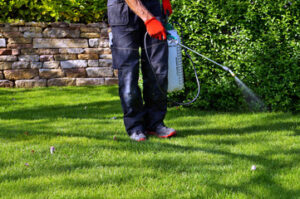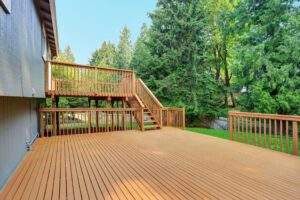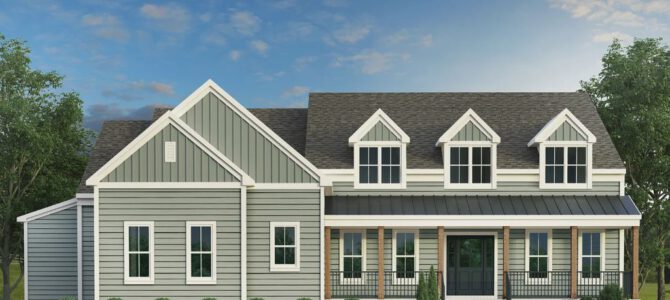Pests are organisms that damage or spoil plants, animals or other things people want to keep. There are many different ways to control pests.

Preventing pests from damaging things usually involves changing conditions to make them unfavorable for them. For example, removing food and shelter can deter some pests. Contact Pest Control San Antonio for professional help.
Suppression reduces pest numbers to acceptable levels. This may involve scouting for pests and taking action when they are found.
Prevention is the best strategy for controlling pests and the problems they cause. It involves preventing or deterring pests from entering or damaging the targeted site. Preventive measures include physical barriers, sanitation and modification of buildings to make them less attractive to pests.
Effective structural prevention includes sealing cracks and gaps that can allow pests to enter a building, and maintaining the structure’s integrity. It also includes keeping water and food sources away from the building, disposing of waste regularly and reducing clutter in areas where pests can hide.
Structural prevention can be augmented with specific enhancements to a building, such as rodent-proofing and screening windows, which can help prevent rodents from entering buildings. In addition, cleaning schedules, regular inspections and the use of repellants can help to prevent pest infestation.
Many different strategies can be used to prevent the occurrence of pests, such as using plant disease organisms that attack only those plants that are vulnerable. Also, planting disease-resistant varieties of plants can reduce the need for pest control.
Another way to prevent pests is by introducing natural enemies, such as predators and parasites. These can be introduced directly to the plants or animals that are vulnerable, or they can be sprayed onto a target area to reduce the presence of pests. These methods are often more cost-effective than traditional pest controls.
Eradication is rarely a goal in outdoor pest situations, as it is often impossible to eliminate a population completely. However, in enclosed spaces such as dwellings; schools and offices; hospitals, food processing and preparation facilities; and commercial warehouses, eradication can be more easily achieved.
Pests like rats, cockroaches and insects can carry and spread diseases, damage crops and property, contaminate food, and cause allergic reactions in people. They can also be a nuisance in public places and affect customer satisfaction. This is especially true in restaurants, retail stores, and office buildings where customers may avoid a business after seeing signs of pests.
Pest prevention is important for all businesses. It can help to keep customers happy, reduce the costs of treatment and repair, and protect a company’s reputation. It can also be an important tool for keeping up with environmental regulations, such as those found in food processing and manufacturing plants.
Suppression
When pest populations increase above acceptable levels or when the time for prevention is past, suppression aims to reduce their numbers and/or damage using methods that cause less harm than other control options. These practices include cultural controls, biological control, and chemical controls.
Cultural controls are those that alter a pest’s environment by depriving them of habitat, shelter, food or water sources. Plowing, crop rotation, soil cultivation, cleaning greenhouse and tillage equipment, effective manure management, and irrigation schedules that avoid long periods of high relative humidity all contribute to suppression by depriving pests of the conditions they need to survive.
In natural communities, some predatory insects and parasitic microorganisms suppress pest species through direct feeding or by interfering with a pest’s reproduction or development. Many of these natural enemies coexist with each other in the same ecosystems and interact in complex ways that may influence their own population levels as well as their ability to suppress pests.
Other natural enemies suppress pests by introducing diseases, which decrease the rate of pest growth or kill them. Bacterial, fungal and protozoal pathogens are examples of natural enemy-induced diseases that suppress insect pests, as are certain nematodes, which kill pests by eating their internal organs.
Occasionally, a disease or other factor can cause an epidemic that requires more rapid pest control than would normally be achieved through prevention and suppression alone. Regulatory control aims to eradicate an outbreak by using quarantine and eradication methods. This is the goal in situations such as the eradication of Mediterranean fruit fly and gypsy moth from agricultural fields and the eradication of fire ants from areas around homes and health care facilities.
Some pests can be controlled through mass release of sterile organisms, such as bacteria or viruses, that are genetically engineered to prevent them from surviving and reproducing. These biological control agents are usually host-specific, meaning they are only effective against one or a few species of pests. They can be used in conjunction with other control strategies to supplement the ability of natural enemies to suppress pests.
Eradication
Eradication is an ultimate goal in pest control, and it is a much harder and more demanding task than suppression or prevention. Eradication requires a global effort because a disease is considered eradicated only when transmission has been eliminated everywhere. Eradication efforts are costly and require intensive surveillance to detect recurrences. Moreover, successful eradication depends on certification by independent and respected parties that no microbe is transmitted within or outside the eradication zone.
The aim of eradication is to restore the natural balance between pest populations and ecosystem resources, such as soil nutrients, water, and biodiversity, so that a sustainable level of crop production can be achieved without the need for chemical controls. The use of pesticides to destroy unwanted organisms is usually associated with negative side effects. The toxicity of insecticides, herbicides, and fungicides can be harmful to the environment, other species in the agro-ecosystem, or human health. Furthermore, the adverse effect of chemicals can be spread to other areas by wind or rain, and they may also leave residues on harvested products that can affect their quality.
Preharvest and postharvest pest control contributes significantly to crop yield and quality, while reducing the need for chemical controls. Integrated pest management (IPM) strategies are often used in conjunction with biological controls. These include the conservation of existing natural enemies and the mass rearing and periodic release of predators and parasitoids, either in a natural habitat or in greenhouses. The use of beneficial insects to suppress pest populations is more cost-effective than the use of conventional chemicals and has the added benefit of avoiding negative spillovers.
A good example of IPM is the use of nematodes to reduce caterpillar infestations in vegetable crops. Other examples of IPM are the use of cultural practices, the planting of crops that provide food for natural enemies, and the monitoring of environmental conditions to predict when and where pests are likely to appear.
Pests can damage crops or endanger human health, and they often carry bacteria that can cause diseases in humans. To eliminate the threat of such diseases, preventative measures are needed to protect people from infection, such as vaccination and the quarantine of susceptible individuals. These measures are expensive, but they can save many lives.
Treatment
Pest control is a multifaceted discipline that includes both preventative and eradication treatments. Prevention is the key to keeping pest populations under control, and eradication treatments are necessary when preventative measures are not effective. There are a variety of methods that professionals employ to reduce the risk of pest infestations, including natural, biological, and chemical controls.
Natural controls limit the number of pests by limiting the environmental factors that support their population sizes. These include weather, topography, and geographical location. Biological controls include natural enemies that injure, consume, or parasitize pests to control their numbers. Pathogens (bacteria that cause disease in the host) and pheromones are also used to manage pest populations.
Chemical pesticides kill or deter the target organism by interacting with its body systems, external coverings, or internal organs. These substances are often grouped together in categories like herbicides, insecticides, rodenticides, fungicides, or larvicides. They are typically regulated by federal, state, and local laws that protect human health and the environment. Many of the pesticides in use today are derived from synthetically produced chemicals, and all of them must be studied for their impact on people and the environment before being approved for commercial sale.
A pest control technician can help with preventative measures by recommending ways to keep food products out of the reach of pests. This might include storing food in sealed containers, fixing leaky pipes, or regularly disposing of garbage.
Preventative measures are not enough to eliminate the need for eradication treatments, and it is important that customers work with professionals to develop a comprehensive pest management plan. In general, a combination of approaches is best.
Insects and other pests can be difficult to deal with because they are so adaptable, but by following the advice of a qualified professional, you can minimize the chances of an infestation. It is also advisable to only use a pest control product that is designed for the specific pest, and always read and follow the label’s instructions and safety warnings. This will maximize the effectiveness of the pesticide and minimize any potential hazards.








